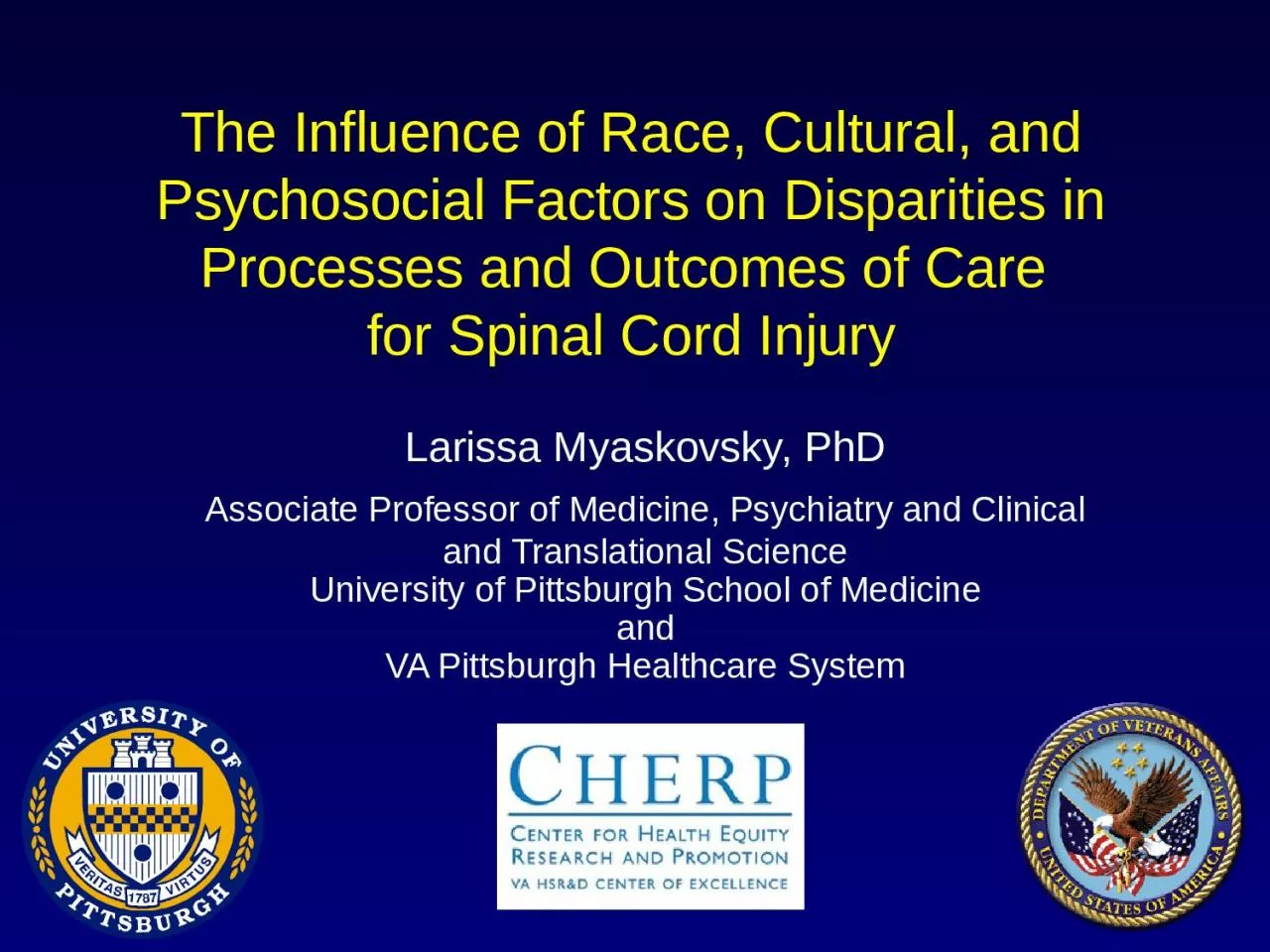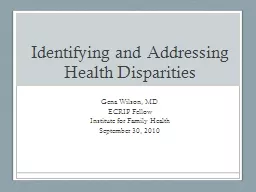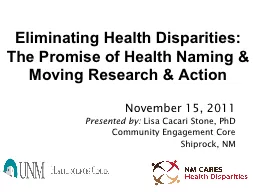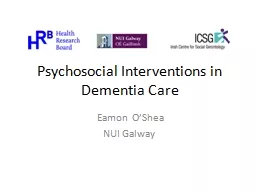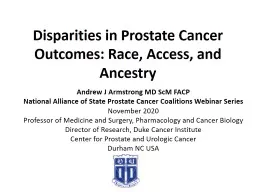PPT-The Influence of Race, Cultural, and Psychosocial Factors on Disparities in Processes
Author : eliza | Published Date : 2024-03-13
for Spinal Cord Injury Larissa Myaskovsky PhD Associate Professor of Medicine Psychiatry and Clinical and Translational Science University of Pittsburgh School of
Presentation Embed Code
Download Presentation
Download Presentation The PPT/PDF document "The Influence of Race, Cultural, and Psy..." is the property of its rightful owner. Permission is granted to download and print the materials on this website for personal, non-commercial use only, and to display it on your personal computer provided you do not modify the materials and that you retain all copyright notices contained in the materials. By downloading content from our website, you accept the terms of this agreement.
The Influence of Race, Cultural, and Psychosocial Factors on Disparities in Processes: Transcript
Download Rules Of Document
"The Influence of Race, Cultural, and Psychosocial Factors on Disparities in Processes"The content belongs to its owner. You may download and print it for personal use, without modification, and keep all copyright notices. By downloading, you agree to these terms.
Related Documents

